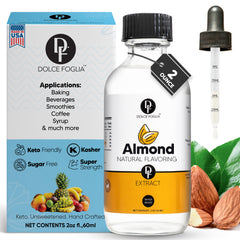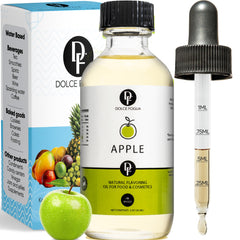
Introduction to Artisanal Chocolate Truffle Making
Welcome to the exquisite world of artisanal chocolate truffles, where each piece is not just a treat but a masterpiece of flavor and texture. This guide delves into the nuances of creating these luxurious confections, providing you with valuable insights and techniques to elevate your chocolate-making art.
Selecting the Perfect Chocolate
The journey begins with choosing the right chocolate, the soul of your truffle. High-quality chocolate makes all the difference. Consider the cocoa content: higher percentages in dark chocolate yield intense, robust flavors, while lower percentages in milk chocolate offer a sweeter, creamier experience. White chocolate, rich in cocoa butter, provides a velvety backdrop for flavors.
The Science and Art of Flavor Infusion
Flavor infusion is where creativity meets science. Dolce Foglia's oil-soluble flavors are perfect for chocolate, as they blend seamlessly without affecting the texture. When infusing flavors, consider complementary profiles: dark chocolate pairs well with bold flavors like orange or chili, while milk chocolate harmonizes with softer notes like caramel or hazelnut. White chocolate is a blank canvas, ideal for delicate flavors like lavender or matcha.
Crafting the Perfect Ganache
Ganache, the heart of the truffle, is a harmony of chocolate and cream. The key is proportions: a 1:1 ratio of chocolate to cream creates a firm ganache, suitable for rolling and shaping. For a softer, more luxurious texture, a 2:1 chocolate-to-cream ratio works wonders.
Heat the cream just until it simmers – too hot, and you'll scorch the chocolate; too cool, and it won't melt properly. Pour over finely chopped chocolate for even melting, then stir gently to combine. Here, add your chosen Dolce Foglia flavor. Allow the ganache to set at room temperature for a silky, smooth consistency.
The Technique of Tempering Chocolate
Tempering chocolate for the outer shell is a skill that distinguishes professional-quality truffles. Properly tempered chocolate sets firm, with a glossy finish and a crisp snap. Use a thermometer to carefully manage the temperature: heat two-thirds of your chocolate to 45-50°C (113-122°F), then cool to 27-28°C (80-82°F) by adding the remaining chocolate, and finally reheat to 31-32°C (88-90°F) for dark chocolate or slightly lower for milk and white chocolates.
Shaping and Finishing Touches
Shaping truffles can be an expression of your style. Use a melon baller or a small scoop for uniformity, or hand-roll for a rustic touch. For coatings, consider cocoa powder for a classic look, crushed nuts for texture, or tempered chocolate for elegance. Experiment with different finishes to create a visually appealing assortment.
Storing and Serving
Store your truffles in a cool, dry place, ideally at 16-18°C (60-64°F). Avoid refrigeration, as it can cause condensation and affect the texture and appearance. Serve at room temperature to fully appreciate their flavor and texture.
Conclusion: The Journey of Chocolate Artistry
Creating artisanal chocolate truffles is a journey of discovery and creativity. With Dolce Foglia's custom flavors, you can craft an array of truffles that are not only delicious but also uniquely yours.
Connect with Dolce Foglia for More
For a deeper exploration of flavors and expert advice, contact Dolce Foglia. Whether you're a seasoned chocolatier or a beginner, we're here to support your chocolate-making adventures.
Email: info@dolcefoglia.com Phone: (213)575-9444
Step into the world of artisanal chocolate truffles with Dolce Foglia, where every flavor tells a story.


